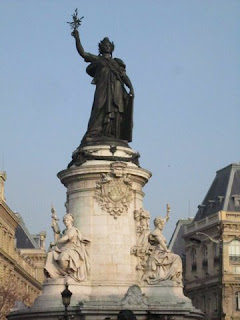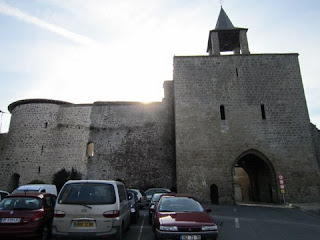Marianne, the national emblem of France, presides over Place
de la République. She stands—as she has since the late 19th century when Baron
Haussmann redrew the map of Paris—above the five streets, four boulevards, one
avenue, one passage, five métro lines and four bus lines that converge around
the square A crossroads, where you can find a cross section of everyday
Parisian life—the good, the bad, and the ugly, and also the beautiful, all part
of the mix.
On a Saturday in late October, street performers demanding
more funding for their public art gathered a lively crowd in the centre of the
square.
Off to one side, a few onlookers paused to listen to a woman protesting
France’s treatment of the Palestinians.
A stand catering to gourmands offered
crepes and cotton candy, a man in a trench coat unhooked a Vélib from its stall
after testing the tires, and groups of friends sipped afternoon coffee at Café
République.
In the upscale Habitat store, a boy following his mom on a scooter paused
at a display of furry ear muffs, while outside, a man huddling in a doorway
with his small dog sold painted tin ash trays.
In Tati, with its crowded bright
shelves, a woman carried her dog through the store in a shopping basket. A
couple embraced on a street corner. Back on the square, black-suited jugglers
tossed fluffy white balls into the air.
































































